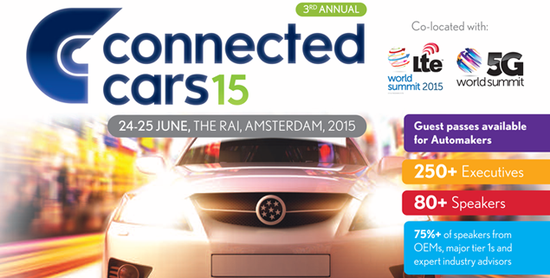Archer Software took part in Annual Connected Cars conference in Amsterdam
As you may know, Annual Connected Cars conference took place in Amsterdam last week.
Archer Software took part in round tables, tech meetings and attended panel discussions with major OEMs (like Audi, Jaguar, BMW, Honda, Seat, Feat, Nissan, PSA), tier 1/2 companies like Tomtom, Harman, Ericsson and others hardware, software, connectivity, legislative and insurance suppliers.

So now, afterwards we can bring you fresh news right from the field. Let’s take a look at the hottest topics discussed:
-
Where the connected cars concept is now and what are the next steps and opened issues that major players see. There are still a major unified standards problem.
It touches everything from communication protocols and vehicle related data that each OEM defines proprietary to the infotainment apps format and integration model.
Which all comes to issues that sees a Driver when he decides to buy a new car, Infotainment Apps Developer who is challenged to work with granulated market of different APIs and the tier 1 companies like Tomtom striving to create the next step to high definition maps that are critically needed for Autonomous cars and more HAD.
The Institute of Standardization for OEM has been established in Europe to resolve this issues and to create standards.
-
How far above the turn is the autonomous driving cars and a lot of problems to be solved in navigation, technology, legislative field, drivers acceptance and more.
Today many companies claims preparing to let their driverless cars out on the streets. Speakers on Connected Cars conference discussed a technology aspects, like algorithm that helps a driverless cars to move in a traffic.
Various sets of sensors that takes readings of surroundings. The second source of information is traffic participants: other connected cars, connected traffic lights, etc. And a cloud storage that processes all this data. Driverless car’s algorithm analyzes all that data and directs the vehicle on the calculated path.
But also on a conference there were discussed the moral and legislative aspects of releasing the autonomous car to the street.
A lot of regulations re collision and corner situations, on government and local levels should and will happen before the driverless car will become the regular part of the transportation.
-
Market opportunities and entry points now for the development companies and startups that gather and process vehicle and road related data. TomTom company introduced its navigation connected car kit.
BMW, Audi, Ford and PSA presented their parts of the eco-systems dedicated to engage the app developers to become the part of driving experience that OEMs deliver to their Drivers.
E.g TomTom kit projects all information to the windshield instead of monitors that diverts from driving and road situation.
The driver manages this information: answers the calls or selects the route by buttons on the steering wheel. And Ford and PSA encouragement programs are helping now young startups that are ready to build the product that will be unique for the OEMs apps market.
-
Rather exciting tech discussion went around new features / user advisory approach / better UX for Head Units infotainment and supplying apps VS legacy car models, user data security and various connectivity problems in regions with lower telecoms coverage and multi-suppliers roaming use cases.
-
Since drivers can now control and service the car with their smartphones, the whole direction of Smartphone and Vehicle UX models were discussed.
To track all activities and car usage owner’s smartphone can generate one time key to have an access to the vehicle.
It can be useful in food or other product delivery, when courier brings the package and leaves it in the car without car owner’s participation. But it raises a questions on data security, data ownership, and it’s usage against interests of the user.
-
A big topic of number of panels was the Driver Behaviour based Insurance models. Current trends in this direction worldwide and specifically in UK and Netherlands.
Existing government invested NGOs and independent startups presented their current products and models of users engagement. The global trend in UBIs is now huge and soon we’ll see much more products coming out arounds this opportunity.
Archer Software offers embedded connected car solutions for all of the aforementioned industries. We have extensive experience developing mobile applications for Android, iOS, Windows Phone, and Blackberry, including apps which feature geolocation, geopositioning, and embedded solutions.
Source: Archer Software


